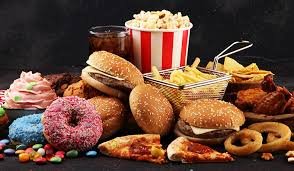
junk food snacks
What Are Junk Food Snacks?
Junk food snacks are typically processed, high-calorie items low in nutritional value but high in salt, sugar, and fat. These are the treats we reach for when we want something quick, crunchy, sweet, or salty—think potato chips, candy bars, soda, and packaged cookies.
While they’re delicious and widely available, junk food snacks are often associated with weight gain, poor nutrition, and long-term health issues. Yet despite their bad reputation, they remain a popular part of modern diets due to convenience, addictive taste profiles, and aggressive marketing.
Understanding what qualifies as a junk food snack—and how to manage your intake—is the first step toward building better eating habits.
Common Types of Junk Food Snacks
Junk food comes in many forms, and you’ll find it in nearly every vending machine, gas station, and pantry. Here’s a look at the most common categories:
1. Chips and Crisps
- Potato chips
- Corn chips (e.g., nachos)
- Cheese puffs and flavored snacks
Often deep-fried and loaded with sodium and artificial flavorings.
2. Candy and Sweets
- Chocolate bars
- Gummies
- Hard candy
- Marshmallows
These are high in refined sugar, which can spike insulin levels and contribute to energy crashes.
3. Sugary Baked Goods
- Donuts
- Pastries
- Packaged cookies
- Snack cakes
These combine high levels of sugar and trans fats, making them especially dense in calories.
4. Fast Food Snacks
- French fries
- Mini burgers or sliders
- Chicken nuggets
- Mozzarella sticks
Typically fried and heavily processed, with high saturated fat and sodium content.
5. Sugary Beverages
While not solid snacks, drinks like:
- Sodas
- Energy drinks
- Sugary iced teas
also qualify as junk food due to their lack of nutrients and high sugar levels.
Want to know how junk food is defined globally? Visit the World Health Organization (WHO) for nutritional classifications.
Why Do We Crave Junk Food Snacks?
There’s more science behind our cravings than you might think. Junk food is engineered to trigger a pleasure response in the brain.
🍬 1. Sugar and Salt Activate Reward Centers
These ingredients release dopamine, the “feel-good” chemical, creating a cycle of pleasure and craving.
🧂 2. Texture and Crunch
The crispy texture of chips or cookies stimulates chewing and gives instant gratification.
🔁 3. Convenience and Habit
Junk food is everywhere—from checkout counters to commercials. It’s easy, fast, and often emotionally linked to comfort or reward.
🧠 4. Food Marketing
Bright packaging, cartoon mascots, and irresistible slogans target children and adults alike. This creates brand loyalty from a young age.
These factors combined explain why it’s hard to eat “just one” chip.
Health Impacts of Regular Junk Food Snacking
Frequent consumption of junk food snacks can have short- and long-term effects on health, including:
❌ 1. Weight Gain and Obesity
Most junk snacks are high in calories but low in satiety, meaning they don’t keep you full. Overeating becomes easy and frequent.
❌ 2. Blood Sugar Spikes
Foods high in sugar cause rapid spikes and crashes in blood glucose, leading to fatigue, irritability, and increased hunger.
❌ 3. Heart and Cholesterol Problems
Trans fats, common in fried and packaged snacks, raise bad cholesterol (LDL) and lower good cholesterol (HDL), increasing heart disease risk.
❌ 4. Digestive Issues
Low fiber content and artificial additives can contribute to bloating, constipation, and poor gut health.
❌ 5. Addiction-Like Behaviors
Studies show that ultra-processed snacks may have addictive properties, particularly when high in both sugar and fat.
For a deeper dive into how processed snacks affect health, check Harvard Health Publishing
Junk Food vs Processed Food: What’s the Difference?
Not all processed foods are “junk.” Processed simply means a food has been altered from its original state.
Examples:
- Processed but healthy: Whole wheat bread, frozen vegetables, canned beans
- Junk food: Candy, chips, soda—heavily processed with little to no nutritional value
So, while all junk food is processed, not all processed food is junk.
Healthier Alternatives to Popular Junk Food Snacks
Looking for a way to snack smarter? Try these healthier swaps that satisfy cravings without sacrificing nutrition.
| Junk Snack | Healthier Alternative |
|---|---|
| Potato chips | Air-popped popcorn with olive oil |
| Candy bars | Dark chocolate (70%+ cocoa) or date bars |
| Soda | Sparkling water with lemon or fruit infusion |
| Cookies | Oatmeal banana cookies or almond flour snacks |
| Fried nuggets | Baked chicken bites or tofu nuggets |
Many of these alternatives can be made at home or purchased from health food stores. Look for items with natural ingredients, low sugar, and fiber content.
Tips for Managing Junk Food Cravings
Eliminating junk food altogether isn’t always realistic—but managing intake is very possible. Here’s how:
🍏 1. Keep It Out of Sight
Out of sight = out of mind. Don’t stock your pantry with high-risk temptations.
🥗 2. Eat Balanced Meals
Stable blood sugar levels reduce junk food cravings. Include:
- Protein
- Healthy fats
- Complex carbs
- Fiber
🥤 3. Stay Hydrated
Sometimes thirst is confused with hunger. Drink a glass of water before snacking.
📏 4. Use the 80/20 Rule
Eat nutritious foods 80% of the time, and allow 20% for treats. This keeps you sane and satisfied.
🍽 5. Portion Control
If you want chips, serve a small bowl instead of eating from the bag.
Should You Completely Avoid Junk Food?
Not necessarily. Total restriction can backfire and lead to binge eating. Instead, think of junk food as:
- An occasional treat, not a daily habit
- Something best enjoyed mindfully
- A chance to practice self-control and moderation
The goal isn’t to demonize junk food, but to make conscious choices that support your energy, mood, and long-term wellness.
Junk Food in Kids’ Diets: What Parents Should Know
Children are especially vulnerable to junk food marketing and peer influence. Overconsumption can lead to:
- Early obesity
- Type 2 diabetes risk
- Poor concentration
- Vitamin deficiencies
Tips for parents:
- Offer fruit, yogurt, or cheese sticks as default snacks
- Involve kids in cooking healthier versions of their favorite treats
- Limit screen time to reduce exposure to junk food ads
Many pediatricians recommend following balanced plate guidelines and avoiding processed snacks as daily go-tos.
Final Thoughts: Snack Smarter, Live Better
Junk food snacks are part of modern life—but they don’t have to dominate your diet. By understanding what makes a snack “junk,” learning about healthier options, and practicing mindful eating, you can enjoy occasional treats without harming your health.
Whether you’re a busy adult, a parent managing kids’ diets, or someone trying to break old habits, it all comes down to one thing: balance.
Snack smart, stay informed, and remember—your body deserves better than just empty calories.






